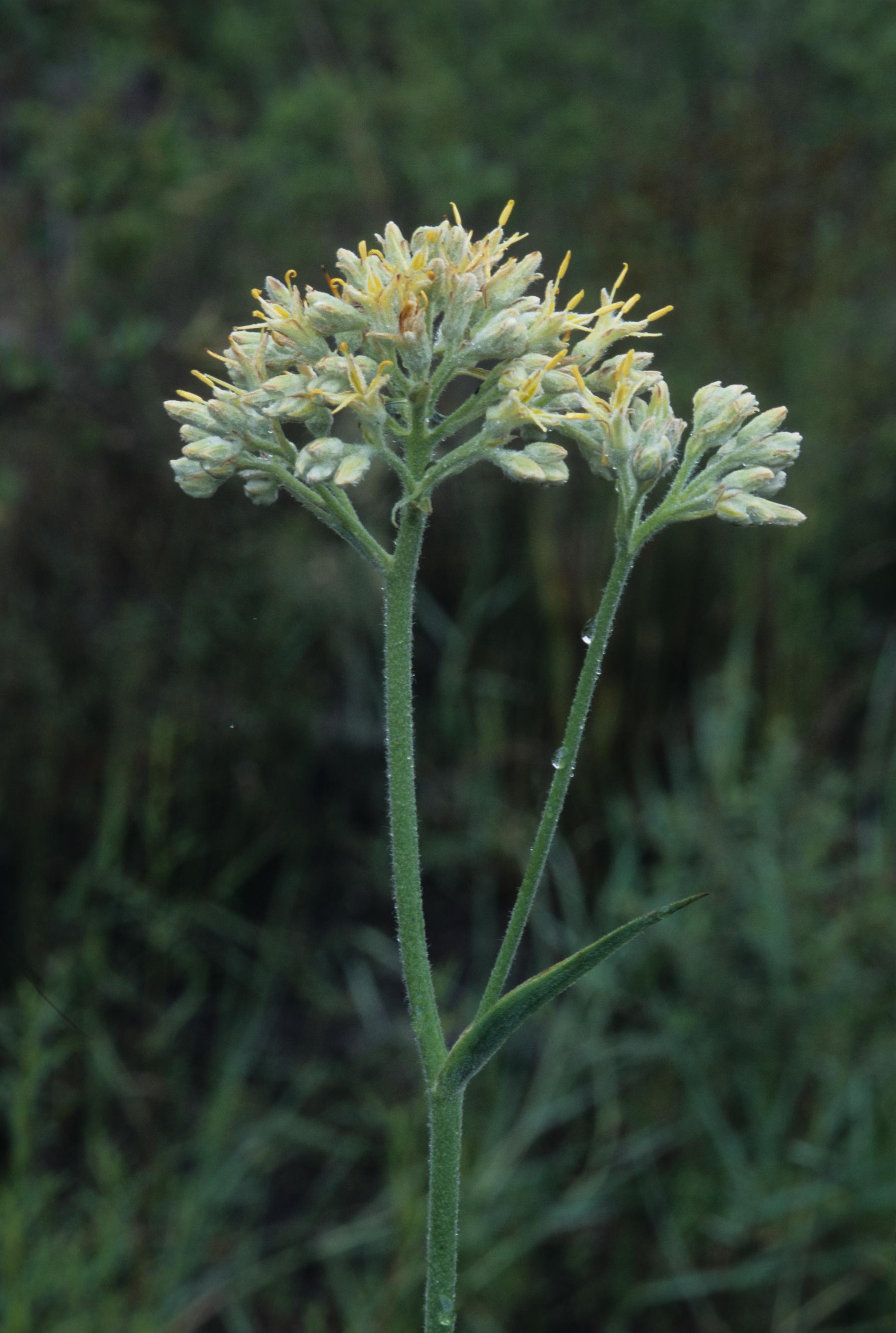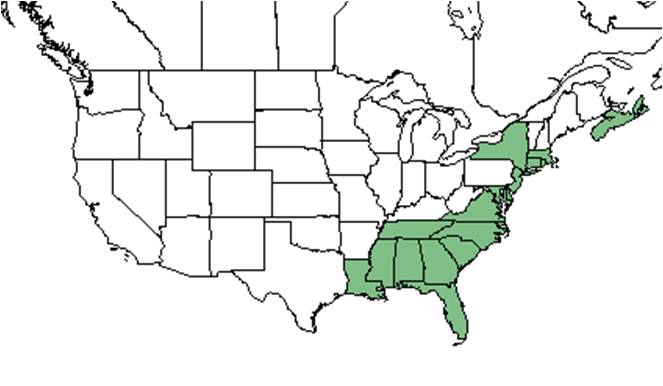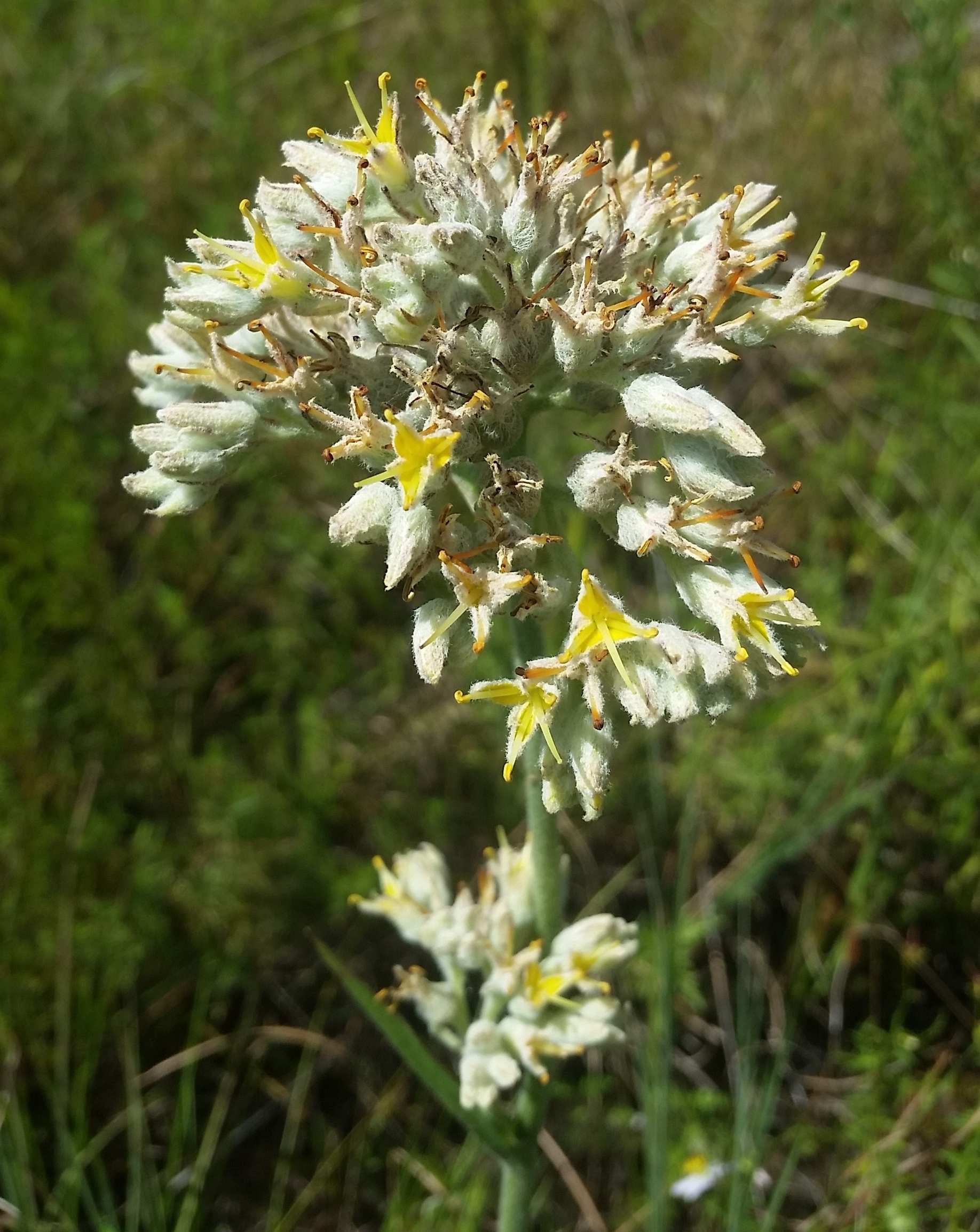Lachnanthes caroliniana
| Lachnanthes caroliniana | |
|---|---|

| |
| Photo taken by Gil Nelson | |
| Scientific classification | |
| Kingdom: | Plantae |
| Division: | Magnoliophyta - Flowering plants |
| Class: | Liliopsida – Monocotyledons |
| Order: | Liliales |
| Family: | Haemodoraceae |
| Genus: | Lachnanthes |
| Species: | L. caroliniana |
| Binomial name | |
| Lachnanthes caroliniana (Lam.) Dandy | |

| |
| Natural range of Lachnanthes caroliniana from USDA NRCS Plants Database. | |
Common name: Carolina redroot
Contents
Taxonomic notes
Description
L. caroliniana is a perennial monocot with slender rhizomes and notable red roots. The flower stalk can reach up to three feet tall and has gray hairs along the top [1].
Distribution
It can be found in coastal environments from Louisiana to Florida and north to Novia Scotia, and can also be foundin Cuba [2].
Ecology
Habitat
Habitats are typically wet, acidic, nutrient poor areas such as mesic and wet flatwoods, wet prairies, and seasonally inundated shorelines [3]. It can commonly be found in disturbed areas such as trails, ditches, fire lanes, and has been observed by Jean Huffman to form dense stands following hog-rooting.
Phenology
Seed dispersal
Seed bank and germination
Fire ecology
It has been observed growing in a pond pine/titi peat swamp that was burned by a lightning set wildfire four months previously (FSU Herbarium).
Pollination
The following Hymenoptera families and species were observed visiting flowers of Lachnanthes caroliniana at Archbold Biological Station (Deyrup 2015):
Apidae: Apis mellifera, Bombus impatiens, B. pennsylvanicus, Mellisodes communis
Halictidae: Agapostemon splendens, Augochloropsis metallica, A. sumptuosa, Lasioglossum coreopsis, L. nelumbonis
Megachilidae: Anthidiellum perplexum, Anthidium maculifrons, Coelioxys mexicana, C. octodentata, C. sayi, Megachile albitarsis, M. brevis pseudobrevis, M. georgica, M. mendica, M. petulans, M. texana
Sphecidae: Philanthus ventilabris
Vespidae: Polistes bellicosus, P. fuscatus
Use by animals
Diseases and parasites
Conservation and Management
Cultivation and restoration
Photo Gallery
References and notes
Deyrup, M.A. and N.D. 2015. Database of observations of Hymenoptera visitations to flowers of plants on Archbold Biological Station, Florida, USA.
